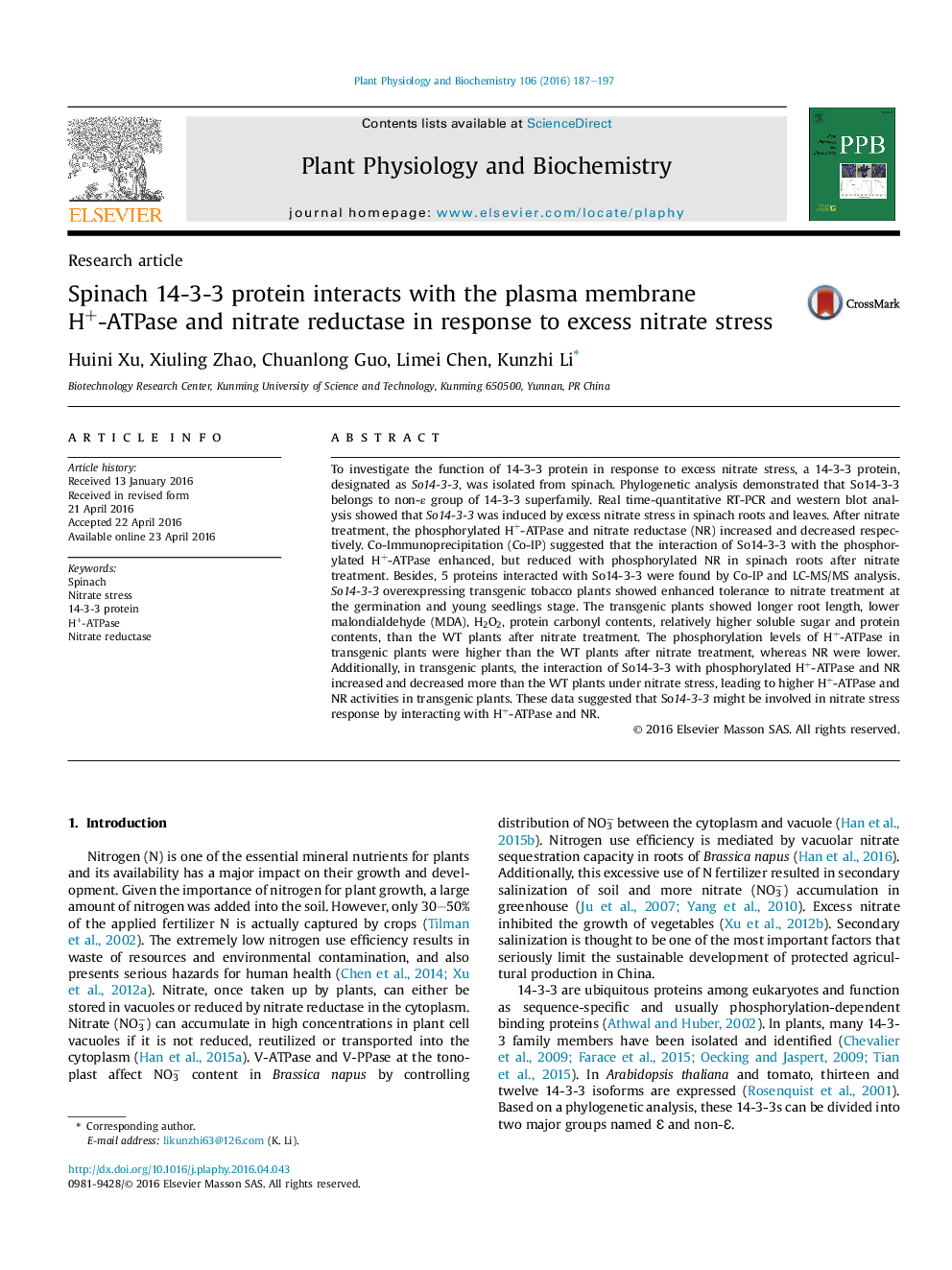| Article ID | Journal | Published Year | Pages | File Type |
|---|---|---|---|---|
| 8353931 | Plant Physiology and Biochemistry | 2016 | 11 Pages |
Abstract
To investigate the function of 14-3-3 protein in response to excess nitrate stress, a 14-3-3 protein, designated as So14-3-3, was isolated from spinach. Phylogenetic analysis demonstrated that So14-3-3 belongs to non-ε group of 14-3-3 superfamily. Real time-quantitative RT-PCR and western blot analysis showed that So14-3-3 was induced by excess nitrate stress in spinach roots and leaves. After nitrate treatment, the phosphorylated H+-ATPase and nitrate reductase (NR) increased and decreased respectively. Co-Immunoprecipitation (Co-IP) suggested that the interaction of So14-3-3 with the phosphorylated H+-ATPase enhanced, but reduced with phosphorylated NR in spinach roots after nitrate treatment. Besides, 5 proteins interacted with So14-3-3 were found by Co-IP and LC-MS/MS analysis. So14-3-3 overexpressing transgenic tobacco plants showed enhanced tolerance to nitrate treatment at the germination and young seedlings stage. The transgenic plants showed longer root length, lower malondialdehyde (MDA), H2O2, protein carbonyl contents, relatively higher soluble sugar and protein contents, than the WT plants after nitrate treatment. The phosphorylation levels of H+-ATPase in transgenic plants were higher than the WT plants after nitrate treatment, whereas NR were lower. Additionally, in transgenic plants, the interaction of So14-3-3 with phosphorylated H+-ATPase and NR increased and decreased more than the WT plants under nitrate stress, leading to higher H+-ATPase and NR activities in transgenic plants. These data suggested that So14-3-3 might be involved in nitrate stress response by interacting with H+-ATPase and NR.
Related Topics
Life Sciences
Agricultural and Biological Sciences
Plant Science
Authors
Huini Xu, Xiuling Zhao, Chuanlong Guo, Limei Chen, Kunzhi Li,
